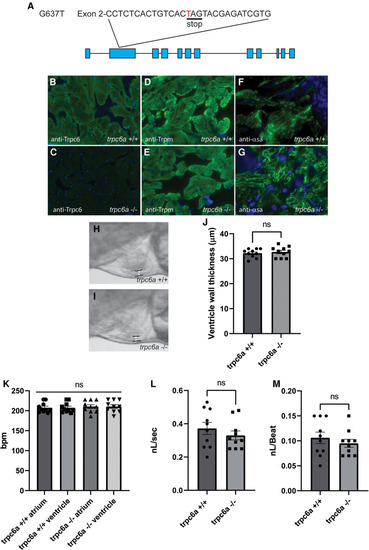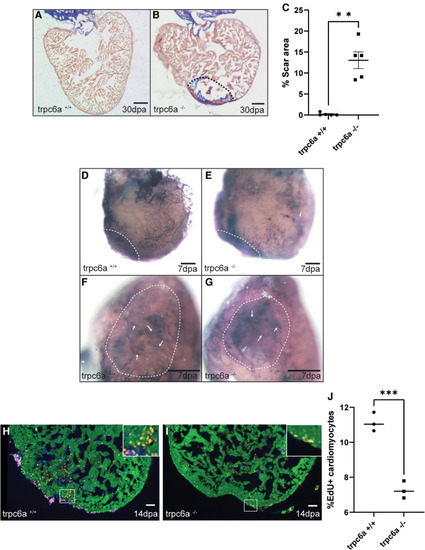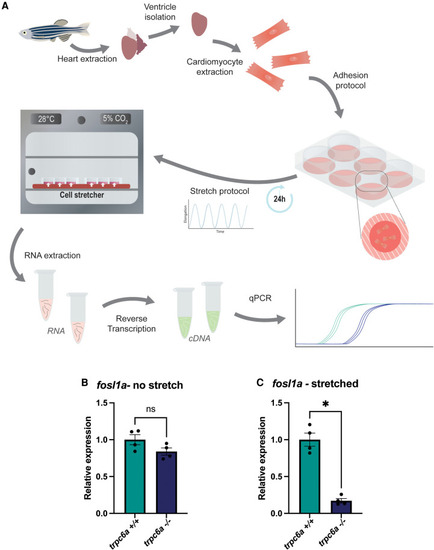- Title
-
The ion channel Trpc6a regulates the cardiomyocyte regenerative response to mechanical stretch
- Authors
- Rolland, L., Abaroa, J.M., Faucherre, A., Drouard, A., Jopling, C.
- Source
- Full text @ Front Cardiovasc Med
|
Loss of Trpc6a does not affect cardiac development. ( EXPRESSION / LABELING:
PHENOTYPE:
|
|
Trpc6a is required for cardiac regeneration. |
|
Loss of Trpc6a results in misregulated gene expression during regeneration. ( |
|
Trpc6a regulates the stretch induced expression of AP1 transcription factor components. ( |




